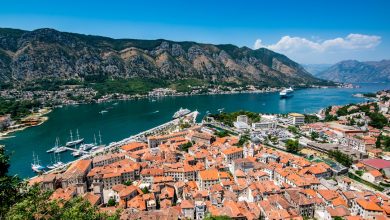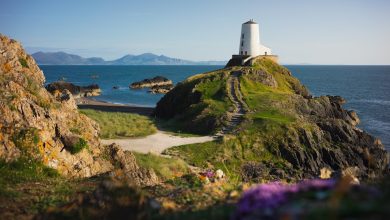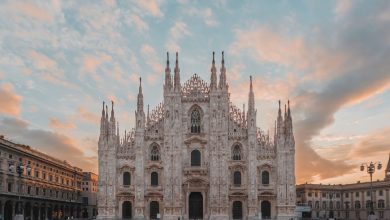
As the sun dips behind the undulating hills adorned with rows of verdant vines, the essence of Tuscany beckons travelers in search of beauty, flavor, and culture. Nestled in the heart of Italy, it’s a land where each corner reveals a story, each meal is a celebration, and every view resembles a masterpiece. This Tuscany Travel Guide is crafted to unlock the secrets of the region for you, guiding you through its picturesque landscapes, exquisite cuisine, and deep-rooted history. Embark on a journey to discover hidden gems, indulge in the finest wines, and immerse yourself in the vibrant traditions that make Tuscany a true traveler’s paradise.
Exploring the Landscape: The Rolling Hills and Vineyards of Tuscany
When one envisions a trip to the heart of Italy, the idyllic landscape of Tuscany often comes to mind. Our Tuscany Travel Guide wouldn’t be complete without indulging in the region’s iconic topography. The rolling hills and sprawling vineyards are synonymous with the area and embody the very essence of what travelers seek in their Tuscan adventure.
Experience the Undulating Terrains
The rolling hills of Tuscany are a quintessential aspect of the region, offering sweeping panoramic views that capture the imagination and soothe the soul. Here’s what you should anticipate:
- Mesmeric panoramas: Each hilltop unveils a vista of earthy tones, lined with cypress trees and dotted with rustic farmhouses.
- Changing seasons: Tuscany’s landscape is a dynamic canvas, with the changing seasons painting the hills in vibrant greens, rich golds, and rustic reds.
Venture Through the Vineyards
No Tuscany Travel Guide can overlook the vast vineyards that produce some of the world’s most esteemed wines.
- Chianti: Known for the prestigious Chianti Classico wine, a tour through these vineyards is both a palatable and picturesque delight.
- Montalcino and Montepulciano: Savor the bold Brunello di Montalcino and the Vino Nobile di Montepulciano, as you stroll among the vines that birth these celebrated drinks.
Embrace the tranquility and the timelessness of Tuscany’s landscape. Allow the harmonic contours of the hills to guide you through a journey of natural beauty. Each curve tells a story, and every vine whispers the secrets of a rich winemaking tradition. Immerse yourself in the scenery that has inspired artists for centuries and continues to enchant all who visit.
Let this Tuscany Travel Guide be your compass to exploring the rolling hills and vineyards, and discover why Tuscany’s heart beats strongest amidst its breathtaking lands.
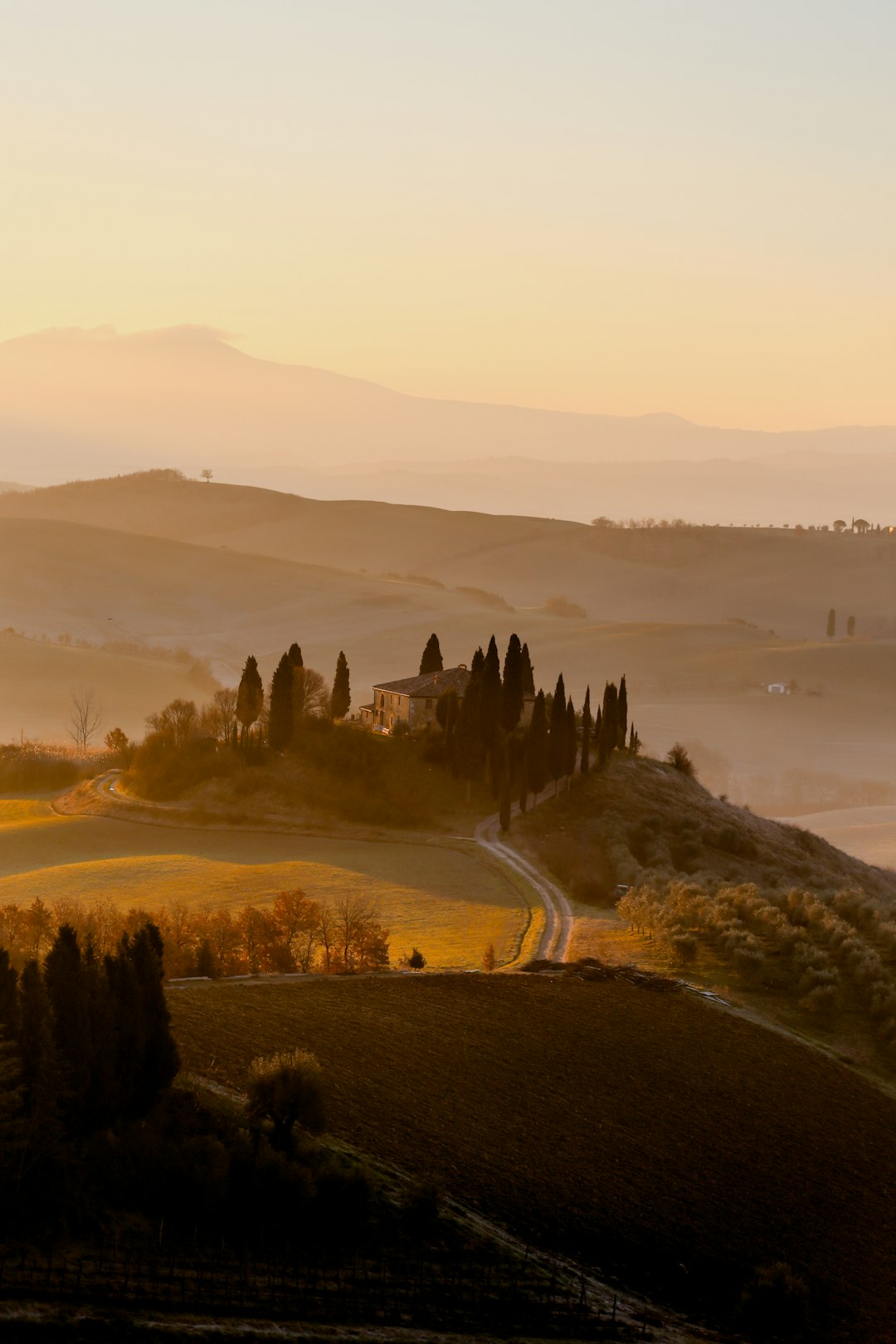
A Taste of Tuscany: Indulging in the Region’s Culinary Delights
When you embark on your journey with a Tuscany travel guide in hand, you’ll soon discover that the region’s cuisine is as rich and varied as its landscape. As you navigate through medieval villages and past sprawling vineyards, the flavors of Tuscany will enchant your palate with every bite. Here’s a taste of what culinary delights await you:
- Local Cheese and Charcuterie: Sample pecorino cheese aged in the Tuscan hills, paired perfectly with finely cured prosciutto Toscano.
- Traditional Bread and Olive Oil: Taste unsalted Tuscan bread, a unique tradition, dipped in robust local olive oil—liquid gold in this region.
- Farm-to-Table Specialties: Endorse the slow food movement with platters of fresh, locally sourced vegetables and meats, celebrating Tuscany’s pastoral bounty.
- Signature Pasta Dishes: Twirl your fork into pappardelle topped with wild boar ragù, a hearty dish that embodies the spirit of Tuscany.
- Indulgent Sweets: Finish with a slice of cantucci, almond biscotti best enjoyed with a glass of Vin Santo, a sweet dessert wine.
The secret to Tuscan cooking lies in its simplicity and quality ingredients. Thus, a true Tuscany travel guide would be remiss without mentioning the region’s use of fresh herbs, like rosemary and sage, that add depth to every dish.
Furthermore, dining in Tuscany isn’t just about the food; it’s a holistic experience. Engage in the convivial atmosphere of a family-run trattoria or dine al fresco overlooking a panoramic view of undulating hills. The warm hospitality of the Tuscans will make your meals even more memorable.
Let your Tuscany travel guide lead you to not just the well-known eateries, but to the nooks where locals gather. Here amidst the laughter and clinking glasses, you’ll find the heart of Tuscan cuisine beating steadfastly, ready to fill not just your stomach but also your soul with its gastronomic wonders.
Historical Riches: Tuscany’s Architectural and Artistic Treasures
Tuscany, a central region of Italy, is as much a treasure trove of art and architecture as it is a byword for scenic beauty. An ideal Tuscany Travel Guide wouldn’t just direct you to the famous sites, but would encourage you to immerse yourself in the abundant historical riches this region generously offers.
From the streets of Florence, the cradle of the Renaissance, to the towered skyline of San Gimignano, Tuscany’s architectural marvels reveal layers of history. Here are some key historic treasures to include in your itinerary:
- Florence’s Duomo: The Cathedral of Santa Maria del Fiore, with its iconic red dome by Brunelleschi, stands as a testament to ingenuity in architecture.
- Pisa’s Leaning Tower: An architectural project gone awry that became one of the world’s most beloved quirks, the Leaning Tower of Pisa is a must-visit.
- Siena’s Historic Center: A UNESCO World Heritage site, the city is famous for its medieval street plan and the Palio horse race.
- Lucca’s Renaissance Walls: The well-preserved ramparts encircling Lucca invite visitors for a leisurely stroll with panoramic views.
Moreover, Tuscany’s artistic treasures extend beyond its stunning architecture. The Uffizi Gallery in Florence houses an unbelievable collection of Renaissance art, including masterpieces by Botticelli and Michelangelo. Every corner of Tuscany seems to boast a piece of art history, sustaining its reputation as a nurturer of arts.
For anyone crafting their own Tuscany Travel Guide, remember to savor these sites slowly. Each cobblestone, each fresco has a story, connecting the modern traveler to the craftsmen and artists who turned this region into a living museum for future generations to cherish.
Hidden Gems: Off-the-Beaten-Path Experiences in Tuscany
When crafting your ultimate Tuscany travel guide, it’s only natural to include the famed cities of Florence, Siena, and Pisa with their iconic cultural landmarks. However, Tuscany’s soul truly reveals itself when you venture beyond these touristic hotspots into the lesser-known nooks that offer a glimpse into the region’s authentic charm.
Unearthing Tuscany’s hidden gems is a journey of discovery, where quieter, quaint towns and unspoiled landscapes await. Here are a few off-the-beaten-path experiences that should find their way into your itinerary:
- San Gimignano’s Lesser-Known Towers: While the UNESCO World Heritage site is well-visited, many miss the opportunity to explore the quieter corners of this medieval town. Venture there during the off-peak hours for a more intimate experience.
- The Hot Springs of Saturnia: Soak up the natural beauty and therapeutic waters of Saturnia, a series of geothermal springs far from the bustle of Tuscany’s main cities.
- The Antique Markets in Arezzo: Dive into the local culture by visiting this monthly market. With vendors selling everything from furniture to vintage jewelry, it’s a collector’s heaven.
- Chiusi’s Underground Labyrinth: Traverse the underground passages beneath this ancient Etruscan city, where a maze of tombs and tunnels provides a fascinating insight into Tuscany’s ancient past.
Including these off-the-beaten-path recommendations in your Tuscany travel guide ensures a balanced journey between the well-known sights and the hidden nooks that offer serenity and surprise. The key to a memorable Tuscan adventure lies not just in seeing the sights, but in experiencing the essence of this Italian heartland, which thrives in the quiet moments and the roads less traveled.
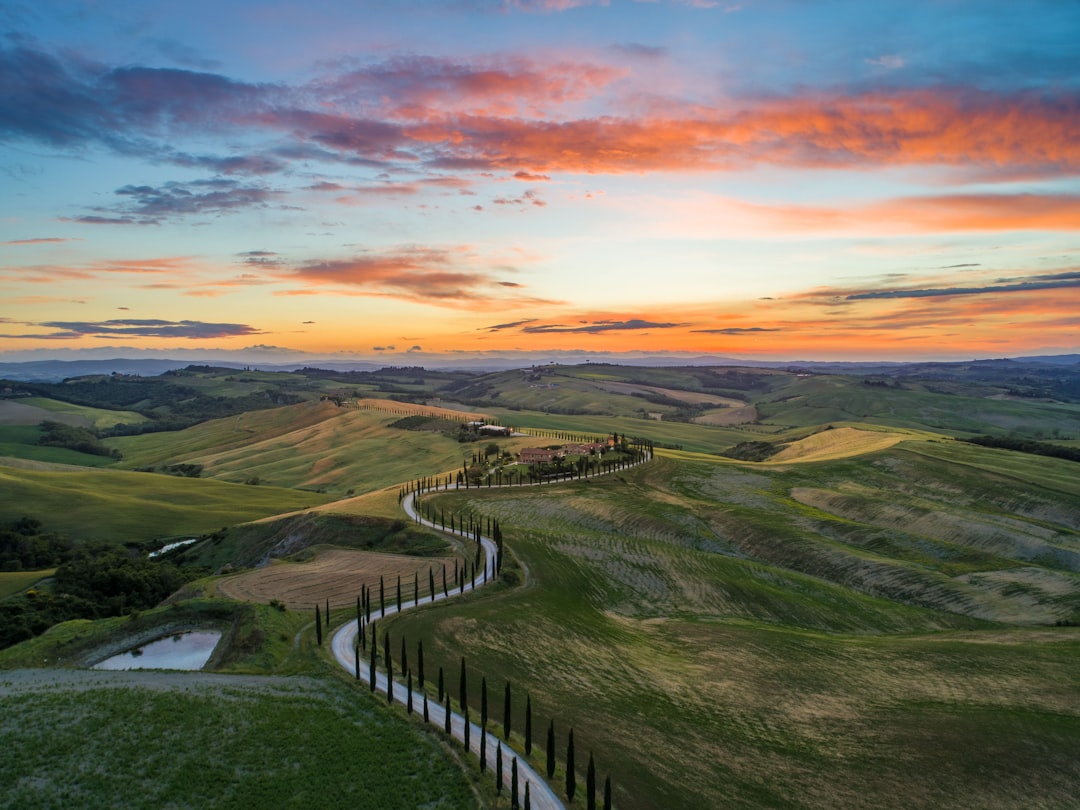
Wine Lover’s Paradise: Discovering Tuscany’s Wineries and Wine Tours
When delving into the heart of Italy with your Tuscany Travel Guide, the lush vineyards and storied wineries are a siren call to any wine enthusiast. Tuscany, revered for its world-class wines, is a paradise where the very essence of viticulture can be experienced through every sense.
In the rolling hills of this storied region, oenophiles will find an array of wineries, each offering a unique perspective on the craft of winemaking. Here are several key elements to guide you through Tuscany’s wine paradise:
- Chianti Classico: No trip to Tuscany would be complete without exploring the Chianti Classico area. Known for its robust reds, notably the Sangiovese grape, in-depth tours unlock the secrets of this varietal’s rich flavor and storied history.
- Brunello di Montalcino: Recognized globally as one of Italy’s premier wines, Brunello di Montalcino is lauded for its deep, complex flavors. A visit to these wineries involves tasting sessions and discussions about the meticulous aging process that contributes to the wine’s notable prestige.
- Vernaccia di San Gimignano: Venture to the medieval town of San Gimignano for a taste of the Vernaccia di San Gimignano, a white wine boasting crisp acidity and floral notes. This delightful gem is a testament to Tuscany’s diversity in winemaking.
To truly embrace Tuscany’s wine culture, consider coordinating your visit with one of the many wine tours offered. These tours often include:
- Guided Wine Tastings: Where knowledgeable sommeliers provide insights into the aromas and tastes of a fine selection of wines.
- Vineyard Walks: Wander the grapevine-laden fields and learn about the region’s unique terroir.
- Food Pairings: Indulge in Tuscan cuisine and learn how its flavors complement the local wines.
The quintessential image of Tuscany—rolling hills, endless vineyards, and the clinking of glasses—becomes a reality within these enclaves of vinicultural excellence. Your Tuscany Travel Guide is your key to unlocking these hedonistic pleasures, ensuring every sip is not only a taste of wine but also a gulp of the region’s soul. Whether you’re an aficionado or a curious novice, the wineries and wine tours of Tuscany await to engulf you into a world where wine is not just a drink, but a way of life.
Cultural Immersion: Festivals and Traditions Unique to Tuscany
Immersing yourself in the local culture is a cornerstone of any meaningful travel experience, and Tuscany, with its rich tapestry of festivals and traditions, offers an array of opportunities for the engaged traveler. This Tuscany Travel Guide section will walk you through some of the most vibrant and unique cultural festivities that Tuscany has to offer.
- Palio di Siena: Probably the most famous event in Tuscany, the Palio is a thrilling horse race held twice a year, on July 2 and August 16. It’s more than just a race; it’s a deep-seated tradition where the various districts (contrade) of Siena compete for pride and glory.
- Lucca Comics & Games: For something decidedly modern, Lucca hosts Europe’s largest comics festival in the fall. This event draws a global crowd eager to celebrate pop culture, comics, and games in the historic surroundings of Lucca’s Renaissance walls.
- Calcio Storico Fiorentino: Florence brings history to life with this ancient game of soccer, which combines elements of rugby and wrestling. Held in June, it’s played in traditional costume, and it’s not for the faint-hearted!
- Viareggio Carnevale: Tuscany has its own answer to Mardi Gras with this spectacular event. Taking place in February, it’s famous for its gigantic, ornate floats and elaborate parades.
- Il Desco – Food and Wine Festival in Lucca: Looking to indulge in Tuscany’s culinary delights in a festive atmosphere? This festival, held in late autumn, showcases local food products, wines, and traditional cuisine.
In addition to these events, numerous local sagre (food festivals) celebrate everything from chestnuts to truffles to olive oil throughout the year. Each festival offers not just a taste of Tuscany’s culinary excellence but also a genuine experience of regional traditions.
When planning your trip, consider timing your visit to coincide with these cultural showcases. Infusing your itinerary with these festivities will provide not just fun and excitement but also a deeper understanding of what makes Tuscany truly special. Remember, a well-rounded Tuscany Travel Guide wouldn’t be complete without immersing oneself in the timeless traditions that make this Italian heartland a feast for the senses.
Navigating Tuscany: Tips for Transportation and Getting Around
As part of our comprehensive Tuscany Travel Guide, let’s dive into the best ways to navigate the picturesque landscapes of Tuscany. Transport options are abundant, but knowing a few key tips can make your travel smoother and more enjoyable.
Firstly, renting a car is by far the most flexible way to explore Tuscany, especially if you’re keen on discovering hidden villages and vineyards off the beaten path. Here’s a comparison of transportation options to help you decide:
| Transportation Mode | Pros | Cons |
|---|---|---|
| Car Rental | Complete freedom, off-the-beaten-track access | Costs can add up, parking restrictions in cities |
| Trains | Cost-effective, connect major cities | Limited to city centers, less frequent in rural areas |
| Buses | Reach smaller towns, scenic routes | Can be infrequent, slower travel times |
| Bicycles | Eco-friendly, good for health | Physically demanding, not ideal for long distances |
If you choose not to drive, Tuscany’s rail network offers a reliable alternative, connecting major destinations like Florence, Siena, and Pisa. Trains are a stress-free way to enjoy the breathtaking Tuscan landscape without the worry of navigating roads.
For those who appreciate slower travel or are on a tight budget, buses are an invaluable resource. Bus routes can take you into the heart of rural Tuscany, where you might stumble upon charming hilltop towns not easily accessible by train.
For the environmentally conscious and active travelers, renting a bicycle can be both a charming and intimate way to see the countryside. Tuscany’s rolling hills may be challenging, but the rewards are unparalleled views—and the perfect excuse for an extra scoop of gelato!
Regardless of your choice, utilizing this Tuscany Travel Guide to plan your travel routes in advance is crucial. Always check schedules ahead of time, especially on weekends and holidays when services may be reduced. And remember, while getting around is important, the journey itself is also part of the magical experience that is Tuscany.

Accommodations with Character: Where to Stay in Tuscany
Finding a place to stay is a crucial part of planning your trip, and our Tuscany travel guide wouldn’t be complete without a reliable source of information on the finest accommodations in the region. Tuscany offers a wide array of unique lodging options, each with its own charm and characteristics, ensuring that every traveler can find the perfect fit for their taste and budget.
Farmhouses and Agriturismos:
- Bring a rustic, authentic experience.
- Usually family-run, offering homemade meals and local products.
- Participants gain insight into the agricultural lifestyle of Tuscany.
Boutique Hotels and B&Bs:
- Provide intimate settings with personalized service.
- Oftentimes nestled in historical buildings with modern comforts.
- Ideal for travelers seeking cozy atmospheres and local hospitality.
Villas and Estates:
- cater to those desiring luxury and privacy.
- Often come with stunning views, pools, and expansive grounds.
- Perfect for groups, families, or a romantic getaway.
Budget-Friendly Options:
- Hostels and budget inns for cost-conscious travelers.
- Clean, basic accommodations without sacrificing location.
- Delightful places to connect with fellow adventurers.
Examples of Accommodations:
| Category | Features | Ideal For |
|---|---|---|
| Farmhouses | Homemade meals, local products, countryside | Culture enthusiasts, families |
| Boutique Hotels | Personalized service, cozy atmosphere | Couples, solo travelers |
| Villas and Estates | Luxury, privacy, exclusive amenities | Groups, families, luxury trips |
| Budget-Friendly | Cost-effective, shared facilities | Backpackers, young travelers |
When incorporating a Tuscany travel guide into your itinerary, consider what sort of experience you hope to have. Perhaps you’re looking for a peaceful retreat amongst the vineyards, or maybe you’re eager to bond with fellow travelers in a more communal setting. Whatever your preference, Tuscany’s accommodations are sure to enrich your journey with their distinct character and unparalleled Italian charm.
A Sustainable Journey: Eco-friendly Travel Tips in Tuscany
Embarking on a trip to Tuscany is not only an opportunity to immerse yourself in Italian culture but also a chance to travel sustainably. This Tuscany Travel Guide will highlight ways to ensure your visit to the region is as eco-friendly as possible.
Firstly, consider sustainable transportation options. Tuscany offers picturesque landscapes, perfect for:
- Cycling: Rent a bike to explore vineyards and villages.
- Walking Tours: Join guided walks to appreciate the scenery and heritage up close.
When planning your itinerary, think about the carbon footprint of your travel methods. Opting for trains over cars for longer distances can reduce your impact significantly.
Secondly, support local economies by:
- Purchasing local produce: Visit farmer’s markets for fresh ingredients if you’re self-catering.
- Eating at local eateries: Choose restaurants that source ingredients locally and responsibly.
Staying in eco-friendly accommodations is a vital aspect of a sustainable journey. Tuscany has a range of options, from agritourism farms to eco-lodges that focus on conservation. These are often nestled within nature, offering an authentic experience while preserving the environment.
Lastly, be mindful of your consumption. This includes:
- Minimizing waste by reducing plastic use.
- Conserving water and energy during your stay.
- Respecting wildlife and natural sites.
By following these eco-friendly travel tips, you will contribute to the preservation of Tuscany’s irreplaceable landscapes and communities. Your journey through Tuscany can leave a positive footprint on the region, ensuring it remains vibrant and pristine for generations to come. Remember, a key part of a Tuscany Travel Guide is showing respect for the local environment and culture, transforming your travels into a sustainable adventure.
